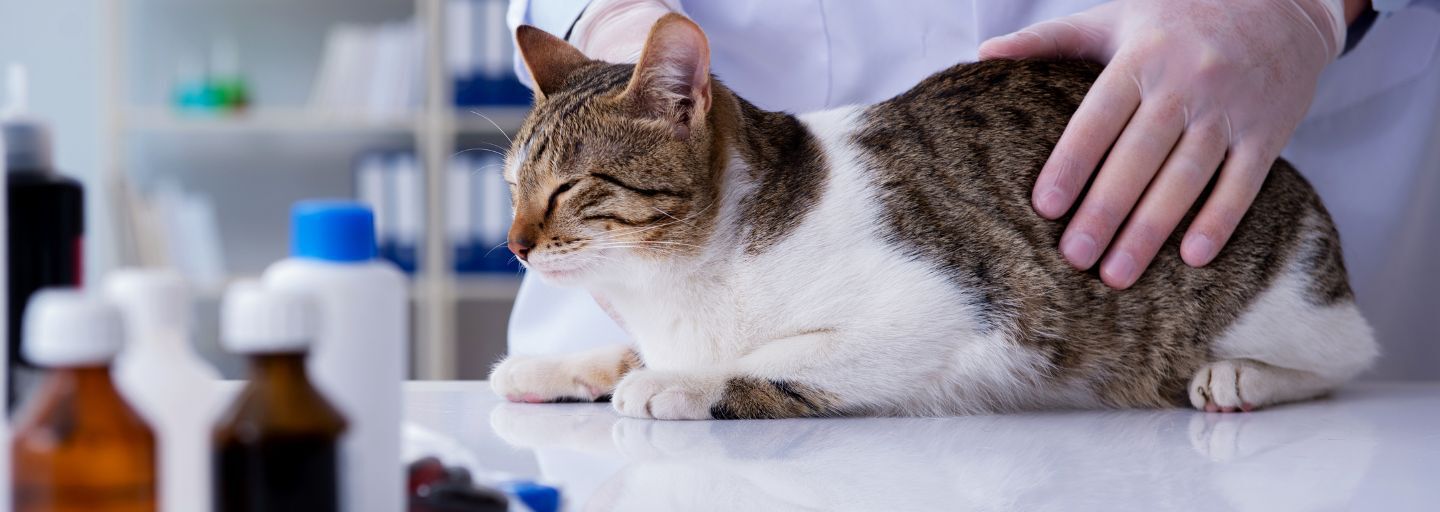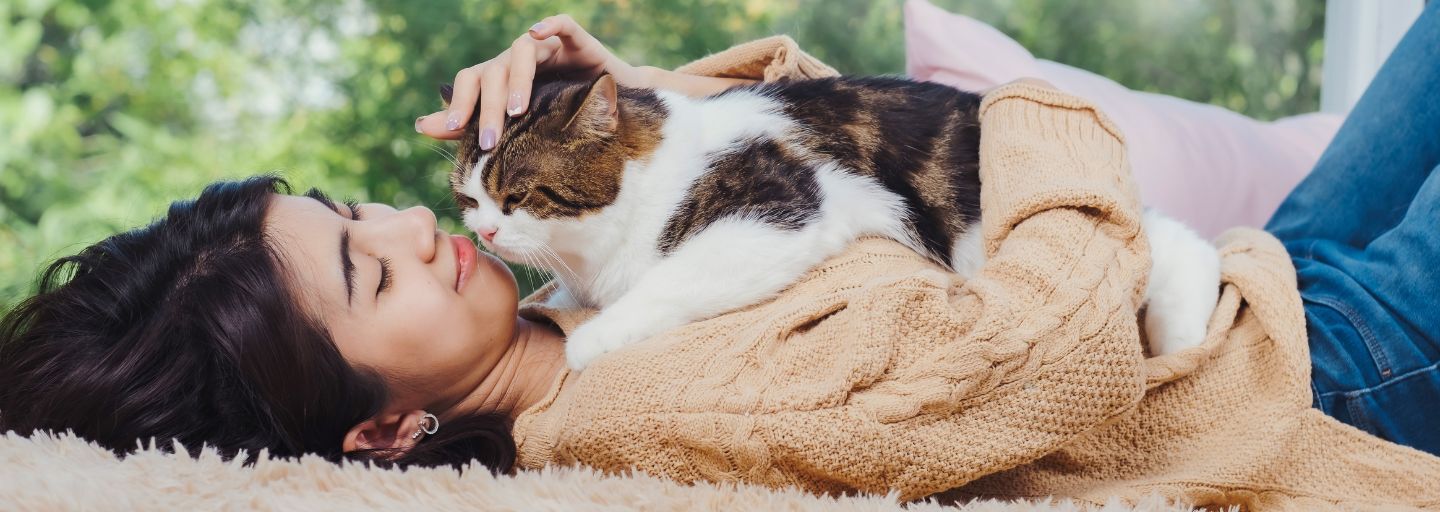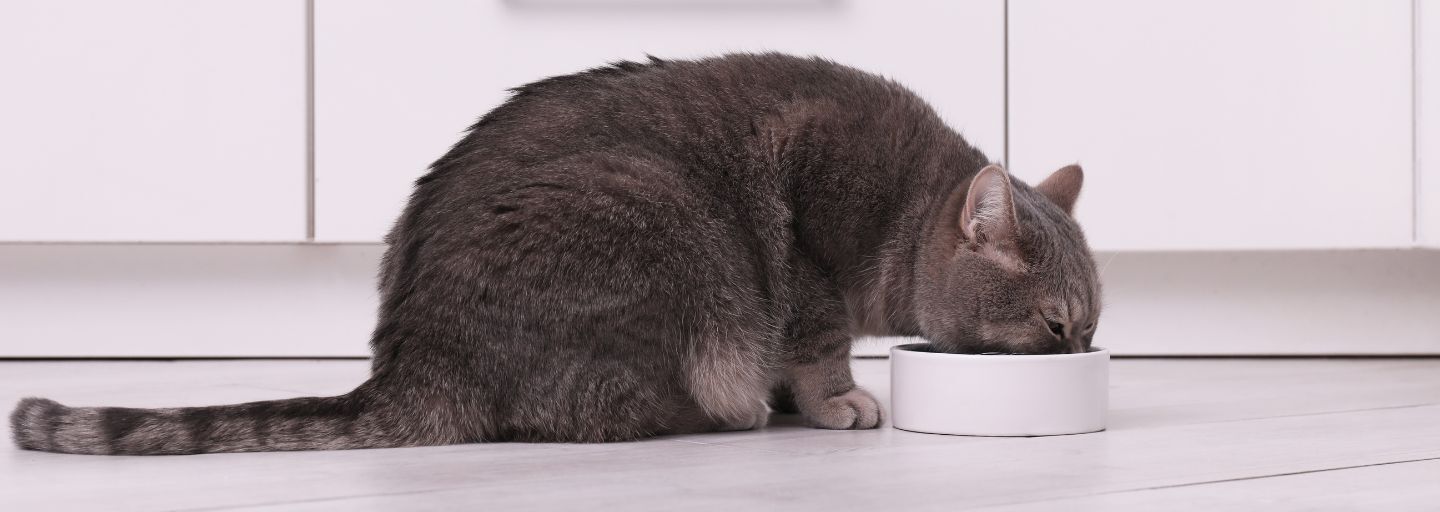Should you and your cat ever be confronted with a life-threatening situation, knowing how to administer emergency first aid is crucial in those first few minutes.
What to do in emergency situations:
If your cat is injured or has an unexpected medical emergency, you need to be able to act quickly and effectively. Knowing how to act in different situations may mean the difference between life and death.
How to handle an injured cat:
Injured animals may lash out due to fright and pain.
Approach your cat slowly and softly. If possible, wear gloves and protect your face.
Hold your pet gently but firmly by the scruff of the neck for restraint and place your hand under her hindquarters for support.
Wrap her in a blanket or towel to prevent any struggling.
Place your cat in a carrier and take her to the vet immediately. If possible, call your vet before you arrive.
Car accidents or serious falls:
Remove your cat from further danger. Move her carefully as she may have internal injuries or have broken bones.
Gently slide your cat onto a stretcher made out of soft material such as a coat.
Try not to twist the body at all. Hold the head a little lower than the rest of the body to keep the blood flowing to the brain.
Keep your cat warm until you reach the vet.
Bleeding:
Firmly apply a cold compress over the wound to stem the blood flow. Do not use disinfectant.
Contact your vet as quickly as possible for treatment.
Poisoning:
Symptoms include drooling, severe vomiting, diarrhea, staggering, convulsions, and abnormal eye movements.
Contact your vet and, if possible, tell them what substance your cat has ingested.
Do not induce vomiting unless your vet advises it.
Vitamin K injections are the antidote to the most common form of rat poison, but treatment must be given quickly.
If your cat's coat has smears of paint or oil on it, soften with petroleum jelly or vegetable oil. Bathe her in warm soapy water and rinse well.
Scalds and burns:
Flush the burn with plenty of cold running water for several minutes.
Never cover the burnt area.
Consult your vet as quickly as possible.
Near-drowning:
As soon as you pull your cat from the water, check if she is conscious. If she is, wrap her in a towel and keep warm.
If your cat is unconscious, first check for a heartbeat, then other injuries. Hold your cat’s head lower than her chest to help drain water from the lungs.
Lay her sideways with the head lower than the chest. Clear any debris from the mouth and pull the tongue forward.
If this doesn't stimulate breathing, attempt artificial respiration by pressing very carefully down on the animal’s chest with the flat of your hand using a short, sharp push. Allow the lungs to refill with fresh air, then repeat every five seconds until your cat starts to breathe.
If there is no sign of life after 30 seconds, try mouth-to-nose respiration. Tilt back your cat's head, hold the mouth shut, and blow short gentle breaths into both nostrils for three seconds to inflate the lungs. Be careful not to overinflate the lungs. Pause for two seconds and repeat. Continue until your cat starts breathing.
Insect bites and stings:
Remove an embedded bee sting with tweezers. Do not squeeze, as the sting will release more poison.
Bee and ant stings are acidic, so bathe the area with an alkali, such as sodium bicarbonate (baking soda) dissolved in cold water.
Wasp stings are alkaline, so treat with diluted lemon juice or vinegar.
A sting in the mouth or throat will swell rapidly and can result in asphyxiation, so rush your cat to the vet.
Problems with choking:
Smaller objects such as a sewing needle or poultry bone may lodge against the roof of your cat's mouth or get stuck in the throat.
Restrain your cat in a towel. Open her mouth, but be careful not to tilt the head back as the object may drop into her throat.
If you can see the object, remove it with blunt-ended tweezers. Don't pull a visible thread, as it may be attached to an object in the stomach.
If you can't find the object, contact your vet urgently.
Electrocution:
Before you touch an electrocuted cat, switch off the power and remove the plug from the socket to avoid giving yourself a shock.
If your cat has chewed through an electrical wire, the mouth and tongue may be burned. Electrical burns can result in shock and cardiac arrest, so contact your vet urgently.
Combating dehydration:
Heatstroke, severe vomiting or diarrhea, kidney disease, or diabetes may cause your cat to lose vital body fluids.
Pinch the loose skin at the back of your cat's neck and lift it up. If it falls back slowly, your cat is dehydrated. Read more about hydration and your cat.
Contact your vet urgently as severe dehydration causes fits and can be fatal.
Remember, if you feel that your cat may be unwell, it is advisable to check for warning signs and take her to a vet. Your cat’s health may depend on it.




